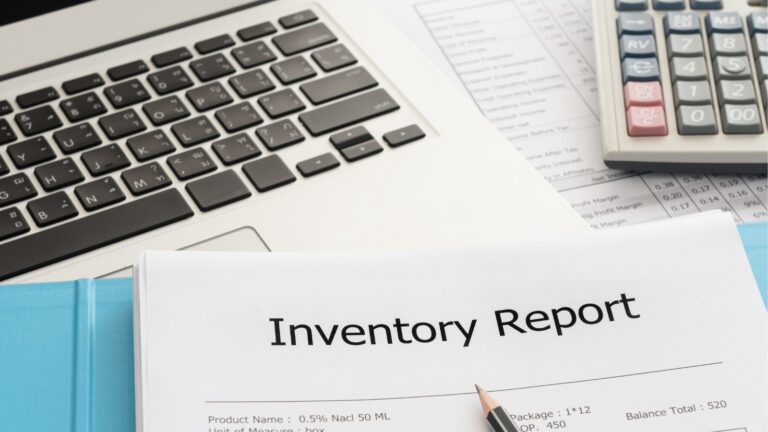
There are multiple things a manufacturer generally needs to keep track of. Simply adopting a digital solution to automate such responsibilities is not enough. There should also be a mechanism to monitor and track each aspect to ascertain there is progress every minute of every day. This is where financial ratios come in. As noted by its term, they monitor and assess everything in terms of its financial value. In other words, it considers whether a process adopted is a success based on its financial viability. Thus, financial ratios are integral to the business, especially for investors. This blog will explain some of the most important financial ratios used today by manufacturers worldwide.
Why Do You Need Financial Ratios?

Financial ratios look at multiple aspects of a manufacturing factory. It typically uses a calculation to assess the amount of turnover inventory, the overall cost for maintenance and its revenue per employee. Investors usually use these ratios to consider whether the factory is worthy of an investment. The ratio helps them quickly ascertain how successful a company’s success is without needing to study it for weeks or months.
Five Financial Ratios Used by Manufacturers

Depending on the type of investors, different people would prioritise certain ratios when studying a company’s potential. Here are five essential financial ratios any investor would consider before investing in a manufacturing organisation.
Inventory Turnover

This ratio considers whether stocks purchased are sold within a specific period. At the same time, it assesses how ready a company is to meet the high customer demand a company may have for certain products by ensuring enough stock is available. Thus, this ratio considers how effective a company is in terms of its inventory. The duration taken for the company to sell and replace its inventory in a given period can be gained by dividing the cost of goods sold by the average balance in the inventory. Knowing such ratios help investors and even manufacturers assess whether they are facing losses and take informed decisions on pricing products, the manufacturing process, the cost reserved for marketing and when placing inventory orders.
Revenue Per Employee Ratio

While manufacturing companies, in particular, focus on automating and digitalising most of their processes, it does not mean that there are no longer any employees in the organisation. Having an automated manufacturing house simply ensures employees are put into more important roles, which requires them to use their innovation and creativity in multiple ways. The performance of employees in this regard is an important mode for the investor or manufacturer to ascertain that the limited labour force available is doing their job properly and that they make a worthy investment. Hence, a revenue-per-employee ratio becomes useful. It is calculated by dividing the total revenue of a manufacturing company by the number of employees. This helps an investor to consider the financial viability of the entire company.
Maintenance Costs

Maintenance is a significant aspect in asset-intensive companies. To ensure all processes are carried out seamlessly without being prone to random breakdowns and downtimes, the investor will consider assessing the total maintenance costs to total expenses ratio. If there is a low repair cost, it demonstrates that a company has durable fixed assets that do not require maintenance. This ratio could also help investors understand whether the equipment is required to be replaced with more reliable machinery that guarantees all quality protocols remain in place. Hence, where a company is not completely digitalised, this helps the investor determine what needs to be updated to integrate it into modern manufacturing standards. Based on these factors, this ratio will act as a driving factor for the investor on whether an investment should be made.
Total Manufacturing Costs

The manufacturing process includes the finances and resources used during the designing, engineering and actual creation stages of a good. The number of prototypes and multiple tests a product undergoes to ensure no defective product is sent to a consumer can be costly. There could also be certain aspects of the manufacturing process which is not traceable, making it hard for manufacturers to keep track of the total amount of money invested in manufacturing goods. Having a financial metric encourages managers to have a system to maintain such financial records. This metric is made by dividing the value of the total manufacturing cost by the number of units produced. This information helps an investor to consider the overhead required to produce goods.
Interest Cover

This refers to a company’s ability to ensure its interest payments are made by comparing the annual interest expense with how much the company earns. The profit and loss or cash flow statement is an important doc which would have the information required to make the correct ratio. This metric is useful to consider how much money will be spent on interest from the income the company generates. The more interest covered there, the better chances of a company being safe from losses or bankruptcy. Generally, it is recommended to have a ratio of :3 or above. Investors considering this ratio can assess the profit worthiness of the company before deciding on investing. If the coverage ratio is below one, it indicates that a company cannot meet its interest payment obligations and, therefore, does not have good financial health.
Cerexio: Keep Track of Important Financial Ratios With No Stress

Cerexio is a vendor that provides exclusive digital technological solution suites exclusively for the manufacturing industry. As a result, Cerexio has designed and engineered its solutions to ensure that manufacturing organisations keep their costs and waste at a minimum. Embedded with industry 4.0 technologies, Cerexio helps manufacturers to implement a transparent platform that makes it easy for the organisation to keep track of all its finances carried out at various levels. Hence, manufacturers will be the first to know if they are facing significant losses before an investor carries out such an assessment in the detailed reports generated. This allows the organisation to take steps from the very beginning to guarantee the company has a healthy financial profile throughout. Such reports may also suggest new ways the company can save its finances based on its own company profile.
Find a customised solution to keep track of your financial ratios by connecting with Cerexio today.
Stay Ahead of Potential Investors

At any point in time, a manufacturing company may require an investor for different reasons. Before an investor agrees to provide financial assistance, however, comprehensive financial checks are carried out. Some companies will only then find through the investor’s assessment that hidden financial drainers make their company an unprofitable investment. With a well-rounded solution suite that tracks your organisation’s finances, however, you will always be a step ahead of an investor. Consequently, you have all the information you need to make positive changes and ensure your company becomes a lucrative investment for potential investors in the future.
This article is prepared by Cerexio, a leading technology vendor that offers specialised solutions in the Advanced Manufacturing Technology Sector. The company is headquartered in Singapore and has offices even in Australia. Cerexio consists of a team of experts that have years of experience and holds detailed knowledge on a range of subject matters centric to the latest technologies offered in manufacturing and warehouse operations, as well as in predictive maintenance, digital twin, PLC & instrumentation setup, enterprise integrator, data analytics and total investment system.
